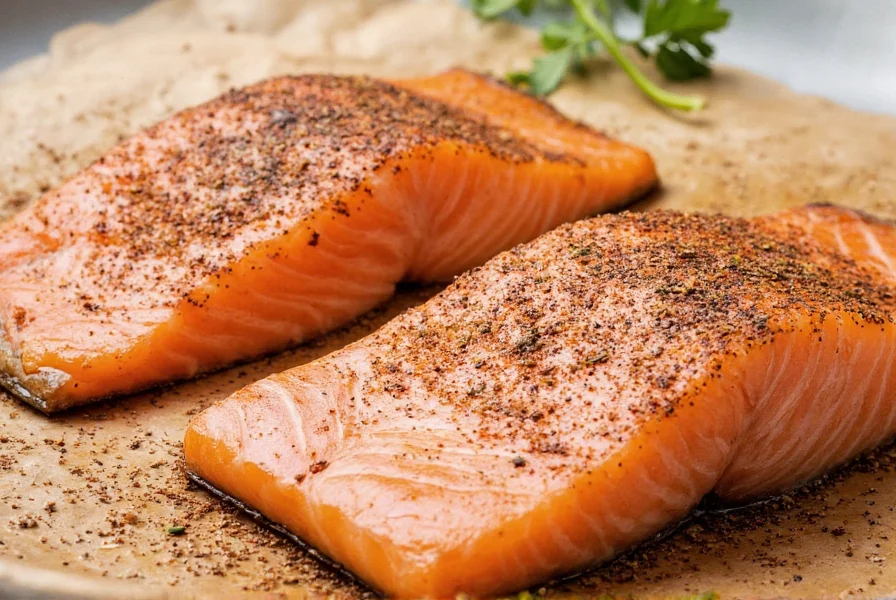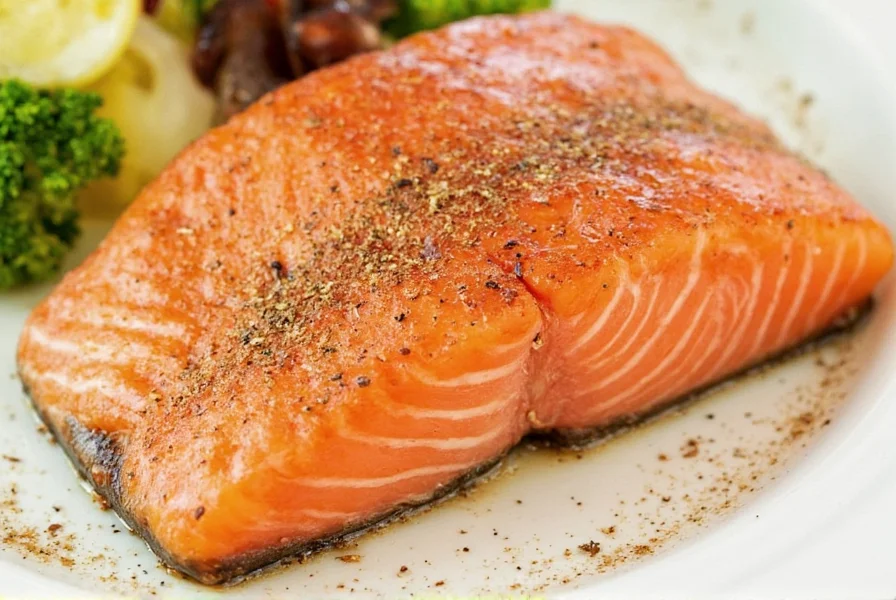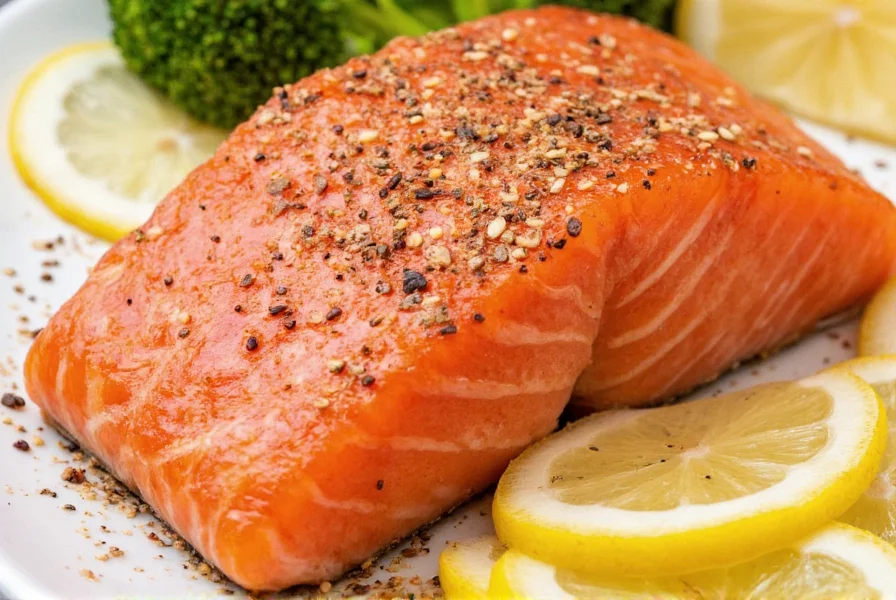Salmon Seasoning: A Flavorful Guide for Beginners and Pros
Table of Contents
Introduction to Salmon Seasoning
If you're a fan of salmon, you know that the right seasoning can make all the difference. Whether you're grilling, baking, or pan-searing your fish, the perfect blend of spices can elevate its natural flavors and create a dish that's both delicious and satisfying. In this guide, we’ll explore everything you need to know about salmon seasoning—its history, types, and how to use it like a pro.

Sometimes, the simplest ingredients can have the biggest impact. Salmon seasoning is no exception. It’s not just about adding flavor—it’s about enhancing the natural taste of the fish while balancing other components of the meal. From bold and spicy to delicate and herbaceous, there’s a seasoning out there for every palate and occasion.
Types of Salmon Seasoning
There are countless ways to season salmon, but they all fall into a few main categories. Let’s break them down:
Herb-Based Seasonings
These are typically light and fresh, perfect for those who want to highlight the natural flavor of the fish. Common herbs include dill, parsley, thyme, and tarragon. They pair well with lemon, garlic, and olive oil.

Spicy Seasonings
For those who like a little heat, spicy salmon seasonings can add a kick without overpowering the fish. Cayenne pepper, paprika, chili powder, and even sriracha are common ingredients. These blends are great for grilled or baked salmon.
Garlic and Lemon Seasonings
A classic combo, garlic and lemon are a timeless pairing that works wonders on salmon. This type of seasoning is often used in Mediterranean-style dishes and pairs beautifully with white wine or butter.
Asian-Inspired Seasonings
If you love Asian flavors, you might enjoy seasonings that include soy sauce, ginger, sesame oil, and rice vinegar. These are ideal for pan-seared or steamed salmon and offer a unique twist on traditional recipes.
Smoky and Bold Seasonings
For a more intense flavor profile, smoky seasonings with paprika, smoked salt, and cumin can add depth and complexity. These are great for grilled or smoked salmon.

Essential Tips for Using Salmon Seasoning
Now that you’ve got an idea of the different types of seasoning, here are some practical tips to help you use them effectively:
- Balance is key: Don’t overdo it. Salmon has a mild flavor, so too much seasoning can mask it.
- Use fresh ingredients: Fresh herbs, garlic, and citrus go a long way. Avoid pre-made spice mixes unless they’re high quality.
- Marinate for better flavor: If you have time, marinating your salmon in a seasoned mixture can enhance the taste significantly.
- Pair with complementary sides: Choose sides that complement your seasoning. For example, a citrus glaze goes well with roasted vegetables, while a spicy seasoning pairs nicely with rice or noodles.
- Experiment with combinations: Don’t be afraid to mix and match seasonings. A little cumin with dill or a hint of chili with garlic can create something truly unique.
One important thing to remember is that salmon seasoning isn't just for the fish itself. You can also use it to season the sides or sauces that accompany your meal. A sprinkle over a creamy risotto or a drizzle over roasted potatoes can add a nice touch of flavor.
Buying Guide for Salmon Seasoning
If you’re looking to buy salmon seasoning, there are several options available. Here are some top products to consider based on their features, advantages, and suitable occasions:
1. Herb & Garlic Salmon Seasoning Mix
Features: Contains dill, parsley, garlic, and onion powder.
Advantages: Light, fresh, and easy to use. Perfect for beginners.
Use Cases: Ideal for baking, roasting, or pan-searing.
Target Audience: Home cooks and casual enthusiasts.
Suitable Occasions: Weeknight dinners, family meals, and gatherings.
2. Spicy Chili Salmon Seasoning
Features: Includes cayenne pepper, paprika, chili powder, and garlic.
Advantages: Adds a nice kick and works well with grilled or baked salmon.
Use Cases: Great for outdoor cooking or when you want a bit of heat.
Target Audience: Spice lovers and adventurous eaters.
Suitable Occasions: Barbecues, summer parties, and dinner nights.
3. Lemon & Dill Salmon Seasoning
Features: Made with dried dill, lemon zest, garlic, and black pepper.
Advantages: Bright and refreshing, perfect for seafood lovers.
Use Cases: Works best with baked or poached salmon.
Target Audience: Those who enjoy light, zesty flavors.
Suitable Occasions: Formal dinners, brunches, and elegant meals.
4. Asian Fusion Salmon Seasoning
Features: Includes soy sauce, ginger, sesame oil, and rice vinegar.
Advantages: Offers a bold, savory flavor that’s perfect for creative cooking.
Use Cases: Ideal for stir-fries, steamed salmon, or sushi.
Target Audience: Foodies and those interested in global cuisines.
Suitable Occasions: Cultural events, themed dinners, and fusion meals.
5. Smoky Paprika Salmon Seasoning
Features: Combines smoked paprika, garlic, and black pepper.
Advantages: Adds a deep, smoky flavor that enhances grilled or smoked salmon.
Use Cases: Best used with grilled or barbecued salmon.
Target Audience: BBQ enthusiasts and fans of bold flavors.
Suitable Occasions: Outdoor cookouts, holiday feasts, and weekend gatherings.
When choosing a salmon seasoning, think about what kind of flavor you're going for and what you'll be serving it with. The right seasoning can transform a simple piece of salmon into a culinary masterpiece.
Conclusion
Salmon seasoning is more than just a simple addition to your dish—it's a powerful tool that can elevate your cooking and bring out the best in your ingredients. Whether you're a seasoned chef or a home cook, understanding the different types of seasonings and how to use them can open up a world of flavor possibilities.
So next time you’re preparing salmon, take a moment to choose the right seasoning. It might seem small, but it can make a big difference. And remember, the best seasoning is the one that complements your taste and brings joy to your meal. Happy cooking!
Salmon seasoning is not just about adding flavor—it’s about creating a memorable dining experience that delights the senses and brings people together around the table.










 浙公网安备
33010002000092号
浙公网安备
33010002000092号 浙B2-20120091-4
浙B2-20120091-4